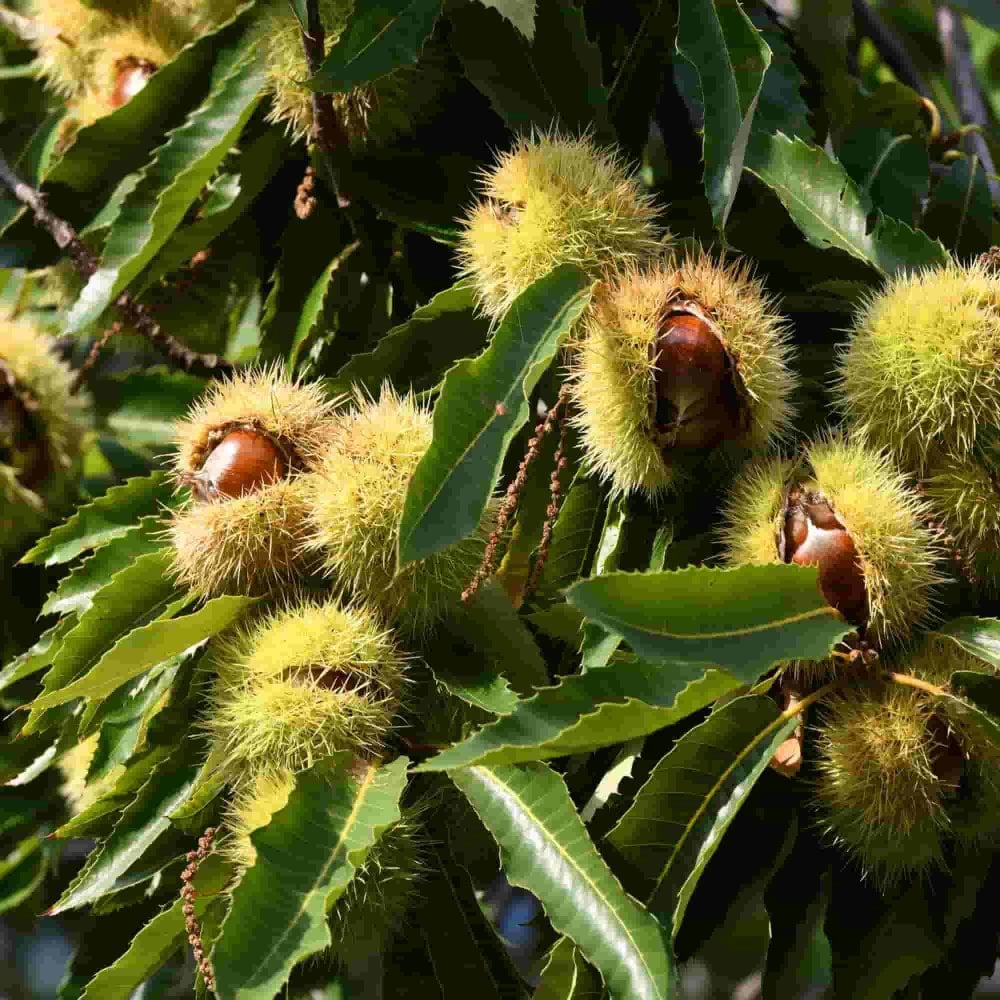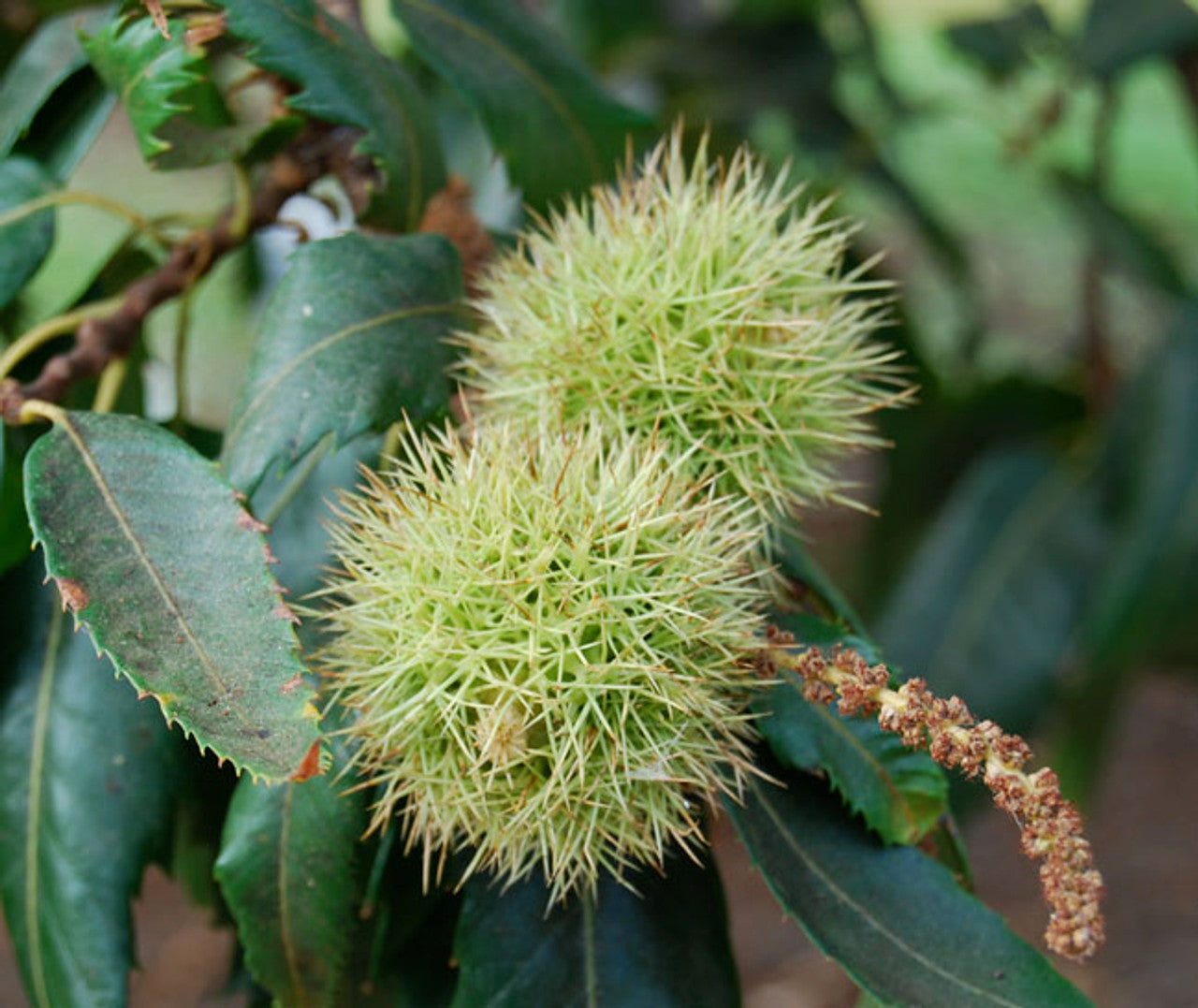






Free Shipping
Safe & Secure Payments
Grow your own Sweet European Chestnut Trees (Castanea sativa) from premium Non-GMO seeds, known for producing delicious, edible nuts and stunning foliage. Native to Europe and Asia Minor, this long-living deciduous tree is highly valued for its nutritious chestnuts and beautiful wood.
The Sweet European Chestnut is adaptable, cold-hardy, and ideal for large gardens, orchards, or natural landscapes. Once mature, it provides shade, wildlife habitat, and an annual harvest of flavorful chestnuts that can be roasted or used in various culinary dishes.
Perfect for home gardeners and tree enthusiasts, these seeds promise a rewarding and enduring addition to your green space.
Produces sweet, edible chestnuts
Hardy and long-living deciduous tree
Non-GMO and naturally sourced seeds
Suitable for orchards, large gardens, and reforestation
Attractive foliage and valuable hardwood
Common Name: Sweet European Chestnut
Scientific Name: Castanea sativa
Plant Type: Deciduous nut tree
Growth Habit: Upright, spreading crown
Height: 40–100 feet (12–30 m) at maturity
Spread: 30–60 feet (9–18 m)
Fruit Characteristics: Sweet, starchy edible nuts enclosed in spiny burrs
Bloom Time: Late spring to early summer
Harvest Season: Late autumn
USDA Hardiness Zones: 5–9
Sun Exposure: Full sun (6+ hours daily)
Soil Type: Well-drained, loamy, or sandy soil
Soil pH: 5.5–6.5 (slightly acidic)
Watering: Moderate; avoid waterlogging
Temperature Range: 55–85°F (13–29°C)
Season: Best planted in fall or early spring
Germination Time: 30–90 days (requires stratification)
Plant Spacing: 25–40 feet apart
Pollination: Cross-pollination recommended (plant two or more trees)
GMO Status: Non-GMO
Organic Status: Naturally grown (non-certified)
Soak seeds in room-temperature water for 24 hours.
Cold stratify seeds in moist sand or peat moss at 35–40°F for 2–3 months.
After stratification, sow seeds 1–2 inches deep in well-drained soil.
Maintain soil moisture and provide full sun exposure.
Transplant seedlings outdoors after the last frost.
Mulch around young trees to retain moisture and control weeds.
Choose options




